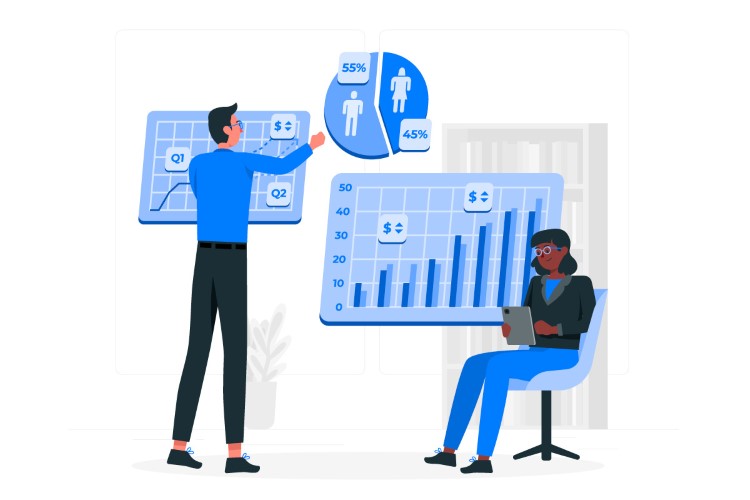In today’s fast-paced world of business, decisions need to be made quickly and accurately. The use of data has become increasingly important in making informed decisions, including those related to human resources (HR). By combining technology’s power with data insights, HR teams can recruit, retain, and manage employees more effectively. In this blog post, we will explore how HR technology like Performance Pro plays a pivotal role in data-driven decision-making by providing comprehensive insights into employee performance and enabling informed strategies for talent development and organizational growth.
Importance of Data-Driven Decision-Making in HR
Historically, many HR decisions were based more on experience and intuition than concrete data. However, as the amount of available data continues to grow exponentially, organizations that leverage it are seeing significant benefits. According to a study by Deloitte, companies that use people analytics outperform their peers by an average of 30%. Specifically for HR departments, data helps measure employee diversity and inclusion efforts while avoiding potential bias.
Data-driven decision-making also allows for greater objectivity in personnel evaluations. For example, performance metrics are not always accurate indicators when taken alone. However, gathering other relevant information, such as peer feedback, can prove powerful data points toward better-informed hiring or promotion practices. This is where HR solutions like Performance Pro can make a difference.
1. Building a Data-Driven Culture
However insightful your data may be, if it is not implemented correctly across your team members who need it most, then its effectiveness becomes limited. Encouraging managers and stakeholders to utilize measurement tools empowers them to gain substantial time-saving methods, leading them towards a more actionable approach to management within their department(s) at all times.
Additionally, organizing metrics efficiently where stakeholders can easily retrieve them decreases the likelihood of redundant record-keeping without diminishing precision reporting accuracy across multiple communication levels. This creates collaborative environments where everyone comes together for common goals, fostering alignment and positive impacts across various channels through continuous measurement.
2. Using Technology for Better Data Collection and Analysis
In our corporate environment, one of the major challenges is often finding the time to identify, collect, and analyze data. We mustn’t forget that technology can make this process more efficient by automating some tedious tasks while supporting complex analysis methods that aren’t feasible for manual or repetitive means of analysis. Additionally, automated systems can reduce the potential for human error, leading to a more effective allocation of resources without sacrificing quality output.
HR technology, in particular, has significantly contributed to data-driven decision-making with its ability to generate key employee metrics on performance and satisfaction. HR will only continue evolving, leading to real-time dashboards tailored towards your organization. Where personalized analytical points meet in real-time they drive informed decisions regarding how departments operate, such as workforce management forecasting or recruiting initiatives, among other areas of relevance.
There is a wide array of software designed specifically for HR professionals. Therefore, it’s essential to make the most of these tools to enhance communication among staff, addressing their specific needs related to team data while aligning employees with collaborative goals across the organization.
3. Applying Data Insights
Various AI-backed software can automate routine tasks, freeing up engaged parties, leading to increased productivity and improved ROI. Graphs and reports help align strategies and prioritize spending, while ethics considerations remain a priority. Data-driven insights aid in employee development, combined with feedback, for better evaluation. Constructive feedback addresses performance gaps and enhances HR technology’s advantages, preventing departmental silos and promoting goal alignment.
Summary
In conclusion, it is clear that HR technology has empowered companies globally. It helps introduce data-driven decision-making capabilities into HR strategies. This relates to informed decisions about hiring, retaining high-performing individuals, and forming effective promotions. These strategies lead to deeper productivity and the use of fewer resources. They involve organizational and departmental initiatives. Additionally, HR technology delivers a great return on investment (ROI). It offers financial and cultural benefits throughout the organization. This occurs when everyone contributes equally to the strategy. It makes the process easier by leveraging our most important resource: human talent.






